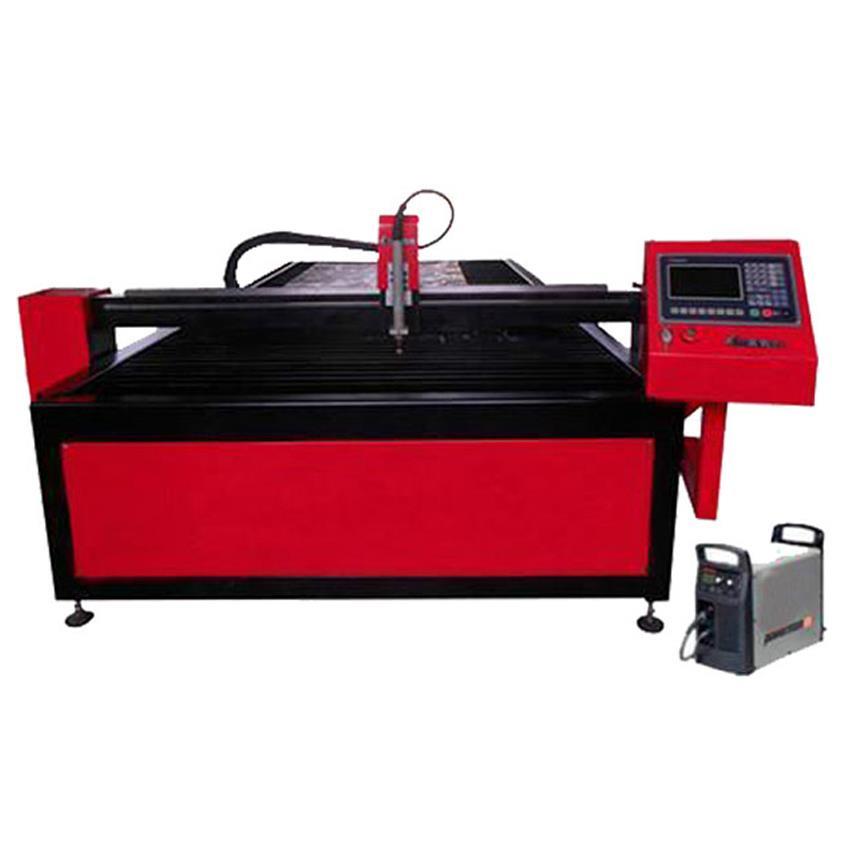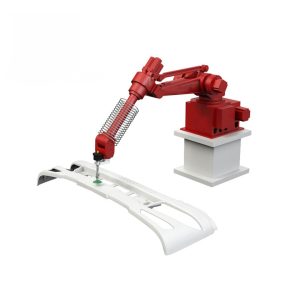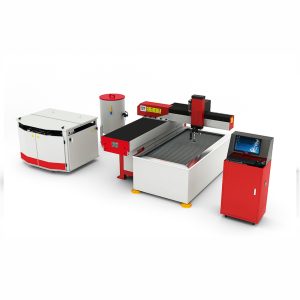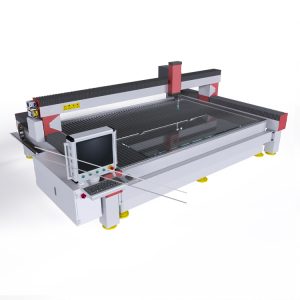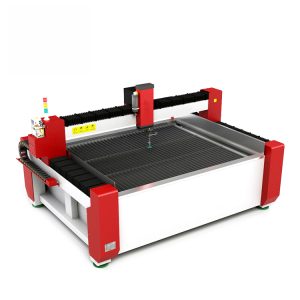The water jet cutting machine is widely suitable for cutting and processing various materials, and is known as the “universal cutting machine”
According to different processing requirements, perform multi angle cutting with higher cutting accuracy
Water jet cutting machines are ideal processing methods for materials that are difficult to cut by other methods, such as aramid, titanium alloys, and various composite materials. It is the most commonly used cutting system in the market today, covering various materials and thicknesses, even including painted surfaces.
Water jet cutting machines Technical advantages
- During water cutting, there is no thermal deformation and the cutting temperature is low, which can prevent thermal deformation and residual tension, avoiding physical and chemical changes in the material
- The cutting surface is neither cracked nor bent, and the incision is smooth and flat without burrs, generally without further processing
- The equipment is operated by a high-performance drive system CNC system, which can achieve high-precision production and rapid processing, eliminating subsequent precision machining processes
- The cutting seam is less than 1.2mm, and the positioning repeatability is ± 0.05 (optional ± 0.01), which is convenient for nesting and cutting, saving materials
- Can process any curve cutting, flexible and convenient, with a wide range of applications
- The amount of material removed by water jet is usually about 0.5-1.0 millimeters wide. Cutting width optimizes material usage and improves cost-effectiveness
- High performance drive system, programmable Z-axis height, capable of performing different types of cutting simultaneously
- The sprinkler is equipped with components composed of solid structures to ensure optimal repeatability and high accuracy of shaft positioning
- The steel frame has undergone over 600 annealing treatments to relieve pressure. They can be used in large quantities for many years without deformation
Water jet cutting machines Product Details
High precision and durable components
Adopting chrome plated guide rails and ball screws, effectively preventing wear caused by abrasives and corrosion. The ball screw and digital drive motion system ensure the high accuracy and long service life of the water knife
Multiple device options
Equipped with a CNC drilling device to solve the problem of edge delamination caused by direct water cutting of sandwich materials. Submerged cutting platform, hydraulic system adjusts water level and height, effectively reducing noise and flying dust during underwater cutting.
CNC operation console
The CNC operating platform has been fully upgraded, making it lighter, more aesthetically pleasing, and more durable; External USB interface, file storage slot, convenient and flexible operation, improving work efficiency; Optional touch screen
Multi head cutting system
A device can carry multiple cutting heads. Improve production efficiency while reducing equipment investment costs.
Automatic sand supply system
The sand supply tank is equipped with sensors to monitor the remaining amount of abrasive. When the abrasive is almost exhausted, an alarm will be issued to remind the operator of the need to add material. Adjustable abrasive feeding speed ensures continuous cutting, truly saving time and avoiding waste.
Comprehensive upgrade of CNC system
The new control interface is more intuitive and easy to operate. Enable you to focus more on the production process, helping you intuitively convert drawings and cutting plans into final cutting components.
Typical applications in the field of metal cutting
(1) Cutting and processing of stainless steel and other metals in decoration and decoration
(2) Manufacturing of machine equipment enclosures (such as machine tools, food machinery, medical machinery, electrical control cabinets, etc.)
(3) Metal parts cutting (such as semi precision machining of stainless steel flanges, steel plate structural components, non-ferrous metals, special metal materials, etc.)
(4) Special cutting: cutting of military explosives (such as shells, landmines, etc.)
Typical applications in the field of glass cutting
(1) Home appliance glass cutting (gas stove countertop, range hood, disinfection cabinet, etc., TV)
(2) Luminaires
(3) Bathroom products (shower rooms, etc.)
(4) Architectural decoration, craft glass

Compared to laser cutting
The investment in laser cutting equipment is relatively large, mostly used for cutting thin steel plates and some non-metallic materials. The cutting speed is fast and the accuracy is high, but laser cutting can cause arc marks and thermal effects at the cutting seam; In addition, laser cutting of some materials is not ideal, such as non-ferrous metals and alloys such as aluminum and copper, especially for cutting thicker metal plates. The cutting surface is not ideal, and even cannot be cut. People’s research on high-power laser generators aims to solve the problem of cutting thick steel plates, but the cost of equipment investment, maintenance and operation consumption is also considerable. Water cutting has low investment, low operating costs, a wide range of cutting materials, high efficiency, and convenient operation and maintenance.
Compared with plasma cutting
Plasma cutting has obvious thermal effects, low accuracy, and it is not easy to perform secondary processing on the cutting surface. Water cutting belongs to cold cutting, without thermal deformation, with good cutting surface quality and no need for secondary processing. If necessary, it is also easy to perform secondary processing.
Comparison between water cutting and wire cutting
For the processing of metals, wire cutting has higher accuracy, but the speed is slow. Sometimes, other methods of perforation and threading are needed to cut, and the cutting size is greatly limited. Water cutting can punch and cut any material, with fast cutting speed and a wide range of processing sizes.
Comparison with other cutting methods
For some metal parts, the punching and shearing process can be adopted, which is efficient and fast, but requires specific molds and tools. Compared with this cutting method, water cutting is more flexible and can be used to cut workpieces of any shape at any time. Especially in cases of thick and high hardness materials, the punching and shearing process will be difficult or impossible to achieve, while water cutting method is more ideal; Flame cutting is also a commonly used cutting process in the metal field, with a wide range of thickness. However, compared to water cutting, it has obvious thermal effects, poor cutting surface quality and accuracy. In addition, water cutting can effectively solve the cutting and processing of special materials such as high melting points, alloys, composite materials, etc.
In the cutting and processing industries of glass, stone, ceramics, etc
The traditional method is to use diamond cutting tools for cutting, sawing, milling, etc. The cutting thickness range is very large and the speed is fast. However, for conventional thickness plates, water cutting can perform high-precision arbitrary curve cutting processing, with high yield, reduced production costs, and greatly increased added value of processed products.




